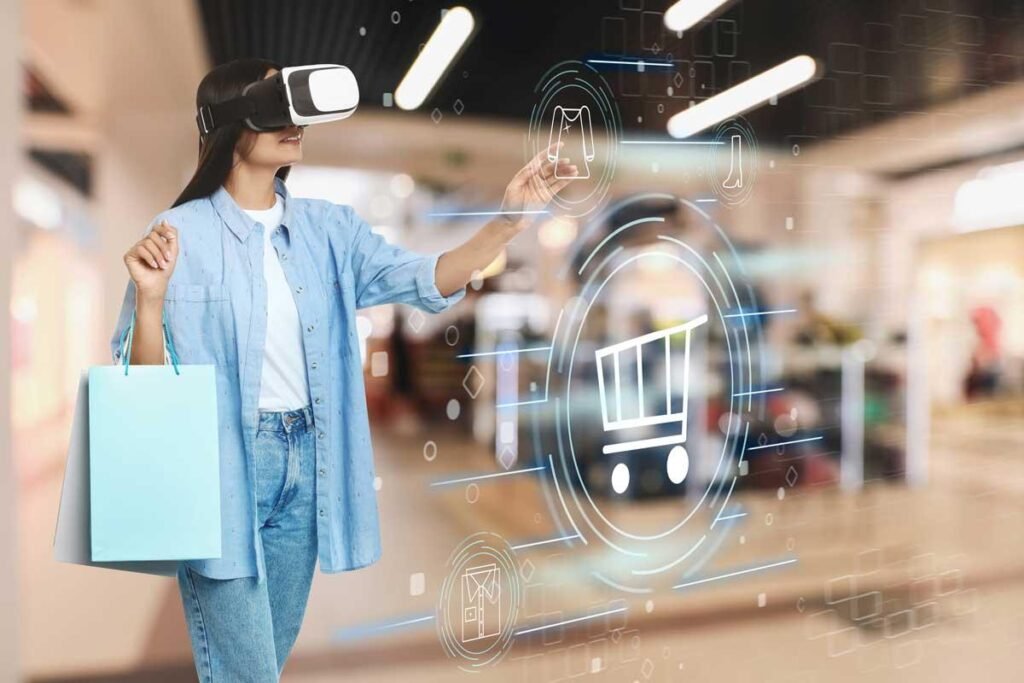The retail landscape is evolving rapidly, and the concept of a VR Shopping Experience is transforming how businesses interact with their customers. As brands continue to innovate, the integration of VR shopping has become more accessible, even for those with tighter budgets. This guide will walk you through how to build a virtual store that is both cost-effective and profitable.
What is Virtual Shopping?
Virtual shopping represents a significant leap from the traditional online shopping experience. Unlike regular e-commerce websites, virtual shops offer an immersive environment where customers can explore products in a simulated 3D space. Imagine walking through a digital version of your favorite store, picking up items, and interacting with them as if you were there in person. This level of engagement can drastically enhance the shopping experience, making it more interactive and enjoyable for customers.
One of the biggest advantages of virtual stores is that they can be as creative and unique as you want. Whether you’re a small business owner or a large corporation, virtual shopping gives you the opportunity to offer something that stands out, helping you connect with your audience in a more meaningful way.
The Use Cases of VR Shopping
VR shopping is not just a novelty; it has practical applications that can greatly benefit your business. Here are a few ways that businesses are using virtual stores to their advantage:
1. Product Showrooms
A 3D store can serve as an interactive showroom, where customers can examine products from all angles, zoom in on details, and even see how items would look in different settings. This is particularly valuable for sectors like fashion, furniture, and electronics, where the look and feel of a product are crucial to the buying decision.
2. Brand Immersion
With immersive virtual shopping, brands can create experiences that deeply connect with their customers. Instead of just browsing through products, customers can be part of a story—walking through a virtual space that reflects the brand’s identity and values. This type of engagement helps build a stronger emotional connection with your audience.
3. Exclusive Events
Host exclusive virtual events like product launches or limited-time sales. These events can generate excitement and a sense of urgency among customers, driving both traffic and sales. The sense of exclusivity can make your virtual shop a must-visit destination during these events.
4. Tailored Shopping Experiences
One of the most exciting aspects of VR shopping is the ability to personalize the experience. By analyzing customer preferences and behaviors, you can customize the virtual space to meet individual needs. This level of personalization can significantly enhance the shopping experience, making customers feel valued and understood.
What You Need to Develop a VR Store
Creating a VR store might sound daunting, but it’s more achievable than you might think, especially with the right tools and approach. Here’s what you’ll need to get started:
1. Game Development Engines
The backbone of any VR Shopping Experience is the game development engine you choose. These engines allow you to create immersive environments where your customers will shop. Unity and Unreal Engine are two popular options. Unity is known for being user-friendly and having a vast amount of resources available for beginners. Unreal Engine, on the other hand, is recognized for its high-quality graphics, making it a great choice if you want your virtual store to be visually stunning.
2. Shopify Ecommerce Store
To keep costs down, consider integrating your VR store with an existing e-commerce platform like Shopify. Shopify handles the heavy lifting of managing inventory, processing payments, and customer data management, so you can focus on creating the VR shopping experience. This way, you can turn your Shopify store into a 3D Shopify Store without starting from scratch.
3. WebVR
WebVR allows you to make your virtual store accessible to anyone with a web browser, which means you can reach a wider audience without requiring them to have VR headsets. This is a significant advantage, especially if your goal is to make VR shopping more inclusive and accessible to the general public.
4. Digital Asset Creation and Management
You’ll need high-quality digital assets—3D models of products, virtual shelves, and store layouts—to create a virtual shop that feels realistic and engaging. Tools like Blender or Maya can help you create these assets, while platforms like Sketchfab offer a variety of premade assets that you can purchase and customize to fit your brand’s aesthetic.
How to Create a VR Shopping Store
Now that you have the basics, let’s walk through the steps of creating a VR shopping store on a budget:
1. Plan Your Virtual Space
Start by sketching out the layout of your virtual store. Think about how customers will move through the space, where products will be displayed, and how they’ll interact with the environment. A well-planned virtual space will feel natural to navigate and will make the shopping experience more enjoyable.
2. Choose Your Platform
Decide whether you want to create VR store or integrate VR shopping features into your existing Shopify store. If you’re looking to keep costs down, the latter option might be more practical, as it allows you to build on an existing platform rather than starting from scratch.
3. Develop the Environment
Using a game development engine like Unity or Unreal Engine, start building your virtual store. Focus on creating an environment that not only looks great but is also functional and easy to navigate. Remember, the goal is to create a VR shopping experience that’s both engaging and efficient.
4. Integrate E-commerce Features
If you’re using Shopify, you’ll want to ensure that your virtual store integrates seamlessly with the platform’s e-commerce features. This includes everything from adding products to the virtual shelves to making sure the checkout process is smooth and user-friendly.
5. Test and Optimize
Before you launch your VR store, test it thoroughly to ensure everything works as it should. Get feedback from a small group of users and make any necessary tweaks. The better the experience, the more likely customers are to return.
6. Launch and Promote
Once you’re satisfied with your VR store, it’s time to go live. Promote your virtual shop through social media, email marketing, and other channels to drive traffic. Consider hosting a virtual launch event to generate buzz and attract customers.
Taking Virtual Retail to New Heights
If you’re looking to build a VR shopping experience without breaking the bank, partnering with a platform like Odyssey3D can be a game-changer. Odyssey3D offers affordable, high-quality solutions for businesses looking to create custom virtual stores. Their platform provides everything you need to design, build, and launch a virtual shop that stands out in the crowded retail space.
With Odyssey3D, you get access to tools and expertise that can help you create a VR store that’s not only visually appealing but also optimized for user experience and profitability.
FAQs
1. What is a VR Shopping Experience?
A VR Shopping Experience is a virtual environment where customers can interact with products and make purchases as if they were in a physical store, but in a digital space.
2. How much does it cost to create a VR store?
The cost of creating a VR store can vary, but using platforms like Shopify and Odyssey3D can help keep costs down by providing the necessary infrastructure and tools.
3. Do I need special equipment to create a VR store?
While VR headsets enhance the experience, you can create a virtual shop that’s accessible via standard web browsers using WebVR, making it accessible to a broader audience.
4. What are the benefits of a VR shopping store?
A VR shopping store offers increased customer engagement, more immersive brand experiences, and the potential to reach a global audience.
5. Can I integrate VR shopping with my existing Shopify store?
Yes, integrating VR shopping with a Shopify store can help you create a 3D Shopify Store that combines the best of e-commerce and virtual reality.
Conclusion
Building a VR shopping experience doesn’t have to be expensive. With the right tools and strategies, you can create a virtual store that offers a unique and engaging shopping experience, all while staying within your budget. Whether you’re enhancing an existing e-commerce platform or starting a standalone virtual shop, the potential for growth and profitability in the world of VR shopping is immense.
Partnering with experts like Odyssey3D can make the process easier, ensuring that your VR store not only meets but exceeds your business goals. As virtual shopping becomes more mainstream, now is the perfect time to invest in a VR shopping experience that sets your brand apart.






More Stories
A Fresh Start: Our Move-In/Out Cleaning Services
Issues Found by Lakeland Home Inspectors
Why Home Inspections Are Key for Maryland